Slatina Sparkling Wine Find Makes Slavonia Champagne Among Croatia's Oldest
February 13, 2021 – A newly discovered, fully preserved bottle of 'Slavonia champagne' is unique evidence that Slatina sparkling wine is among the oldest in Croatia. Its fascinating history stretches back over 150 years
A completely preserved Slatina sparkling wine bottle from the period from 1864 to 1912 has been discovered during building works of Slatina's new visitor's centre. Found at a depth of two metres, the bottle is physical proof of what was previously known only from records – this 'Slavonia champagne' is among the oldest sparkling wine to have been made in Croatia. © Robert Turkalj
© Robert Turkalj
The discovery of the Slatina sparkling wine bottle is important to the city and its history. Other regions in Croatia have become extremely well regarded over recent years for their production of quality sparkling wines. The production of Slatina sparkling wine briefly disappeared during a period. But, this bottle is evidence that Slatina sparkling wine was among the first to be made in the country. It is the only fully preserved bottle of the 'Slavonia champagne' to exist in the region.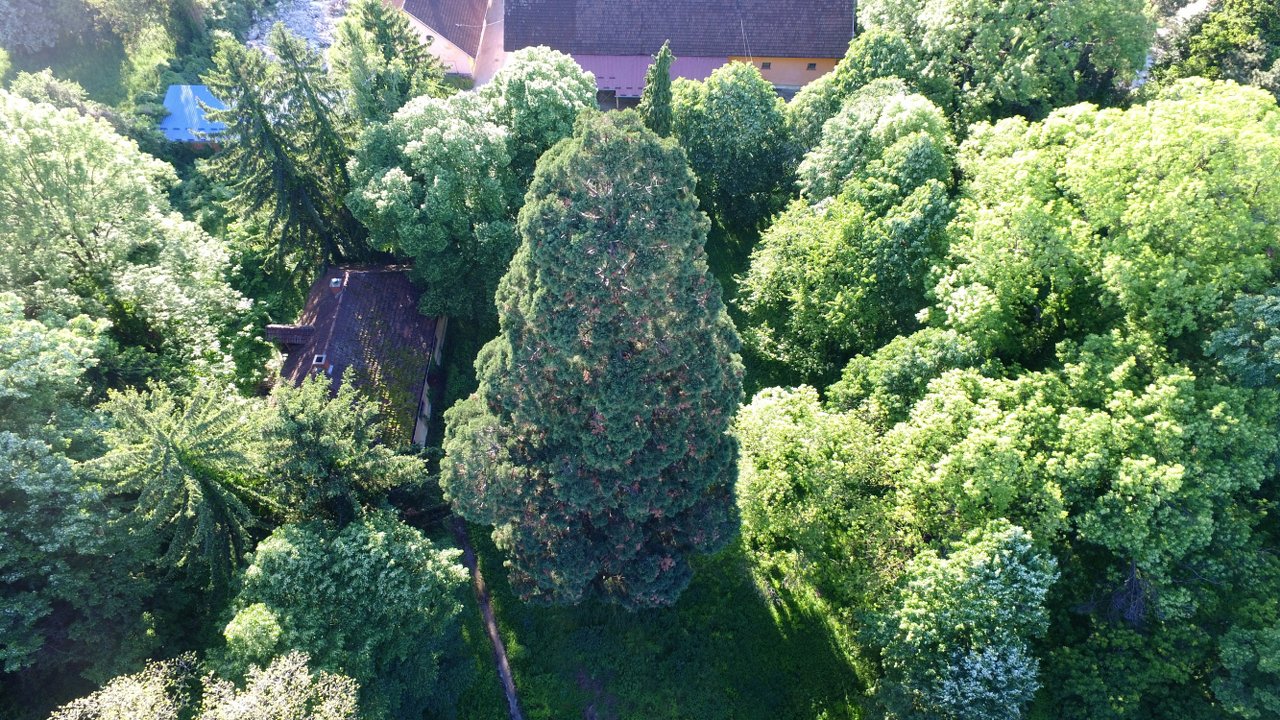 Slatina's nationally protected Giant Sequoia tree (Mamutovac) © Tourist Board of Slatina
Slatina's nationally protected Giant Sequoia tree (Mamutovac) © Tourist Board of Slatina
Of course, we can't really call it champagne – that title is reserved for a type of sparkling wine made in a distinct geographical region in France. But, there are great similarities between Slatina sparkling wine and champagne - similarities that do not exist exactly in other Croatian sparkling wines. Champagne is largely made from the Pinot Noir grape. The found bottle of Slatina sparkling wine was made from the Kadarka grape variety, which has been compared to Pinot Noir.
Both grape varieties are thin-skinned, delicate, easily susceptible to impairment and require a low yield to produce quality wines. Both are tricky to cultivate. For this reason, the Kadarka grape variety is now grown very rarely in Croatia, its place in vineyards taken by more hardy and some imported varietals. But, that wasn't always the case.
History of Slatina sparkling wine
In 1841, the German prince Georg Wilhelm Schaumburg-Lippe bought a property of land in the Slatina area from the Pejačević family. The land contained vineyards, orchards, agricultural fields and large forest areas, including the site of the new Slatina visitor centre where the bottle was discovered. Indeed, trees still line the road of Ulica kralj Zvonimir in the centre of Slatina – the cellar and restaurant of the town's famous Stari Podrum is just a few metres from Slatina's nationally protected Giant Sequoia tree (Mamutovac).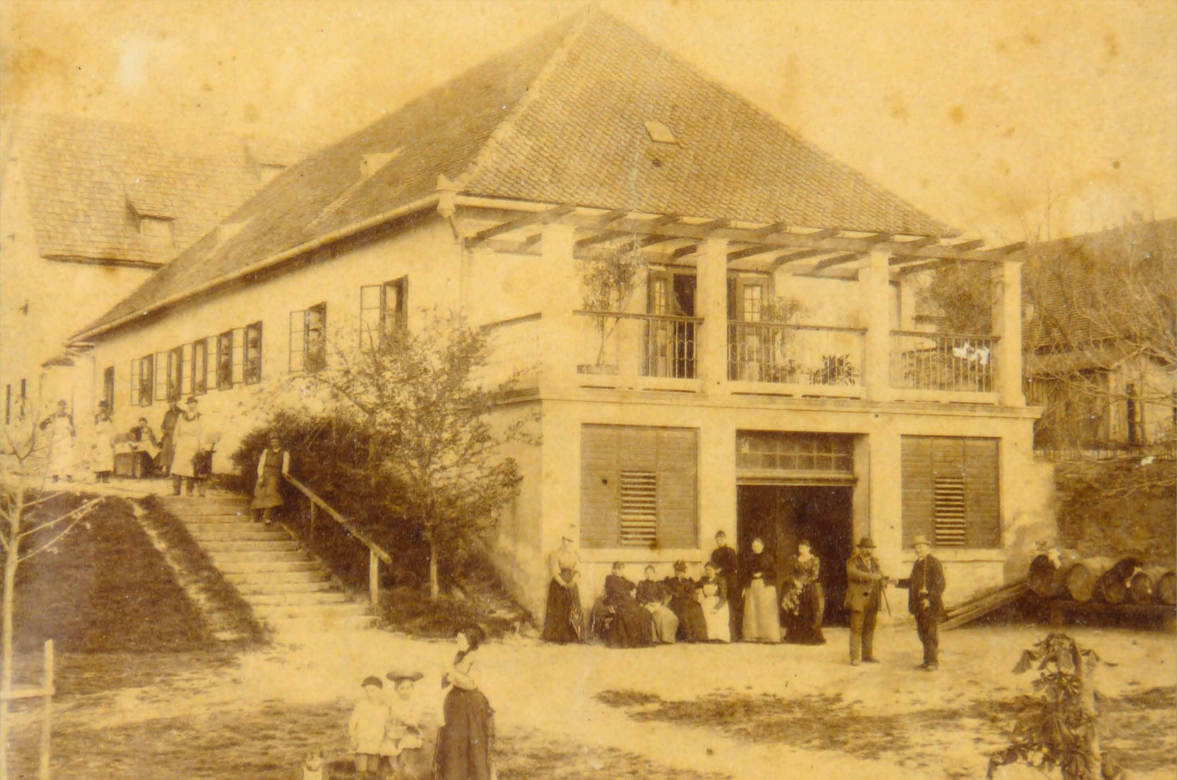 The Stari Podrum cellar, the site of the first-ever production of Croatian sparkling wine, at the beginning of the 20th century © Virovitica State Archives / Slatina Homeland Museum
The Stari Podrum cellar, the site of the first-ever production of Croatian sparkling wine, at the beginning of the 20th century © Virovitica State Archives / Slatina Homeland Museum
Slatina sparkling wine production started in 1864 at the Stari Podrum cellar, using the Kadarka grape variety. Perhaps it was the notorious difficulties of the growing the grape which resulted in slow initial progress for the production, but the enterprise got a massive boost in 1866 with the arrival of a new manager, Otto Rockhror. He rearranged the cellar and production, brought in new equipment and invested in marketing their Slatina sparkling wine. It worked.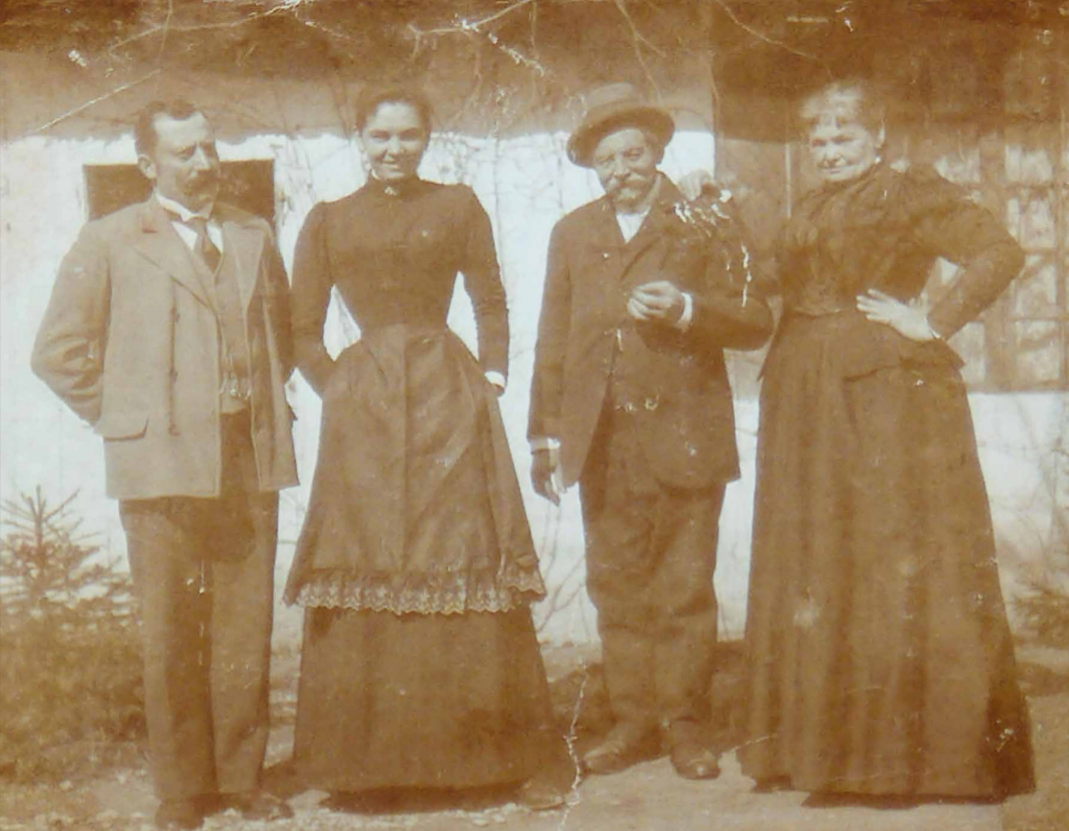 Left to right - Ljudevit Konstantinović, his wife Marija Konstantinović (the daughter of Otto Rockrohr), Otto Rockrohr and his wife Josefina Rockrohr © Virovitica State Archives / Slatina Homeland Museum
Left to right - Ljudevit Konstantinović, his wife Marija Konstantinović (the daughter of Otto Rockrohr), Otto Rockrohr and his wife Josefina Rockrohr © Virovitica State Archives / Slatina Homeland Museum
The quality of Slatina sparkling wine was recognized at the great Economic and Forestry Jubilee Exhibition in Zagreb in 1881 when Georg Wilhelm Schaumburg-Lippe received an honorary diploma and a large medal for domestic sparkling wine and fine wine. The credit perhaps lay elsewhere, considering it was the efforts of Otto Rockhror that were no doubt the cause, but, such were the times. However, Otto Rockhror's achievements with Slatina sparkling wine certainly did not go unnoticed.
At the Science and Industry Fair in Brussels, Belgium, in 1888, Otto Rockhror was awarded a bronze medal featuring the image of Leopold I. He received a further bronze medal with the image of Francis Joseph I in 1890 at the Agricultural and Forestry Exhibition in Vienna and was awarded a silver medal with the image of Franz Ferdinand in 1894 in Vienna by the Association for the Promotion of Agricultural Knowledge. These medals are on display in the Slatina Homeland Museum, donated by Otto Rockhror's great-granddaughter Jasna Nosso. They sit alongside a wooden barrel used in the production of Slatina sparkling wine from 1885 and, now, the latest testament to the history of Croatia's oldest sparkling wine production, the newly discovered bottle, which has been transferred to the museum for preservation, safekeeping and dating. On the left, the bronze medal won by Otto Rockhror at the Science and Industry Fair in Brussels, Belgium, in 1888. On the right, the silver medal with the image of Franz Ferdinand he was awarded in 1894 in Vienna © Virovitica State Archives / Slatina Homeland Museum
On the left, the bronze medal won by Otto Rockhror at the Science and Industry Fair in Brussels, Belgium, in 1888. On the right, the silver medal with the image of Franz Ferdinand he was awarded in 1894 in Vienna © Virovitica State Archives / Slatina Homeland Museum
The production of Slatina sparkling wine from the Kadarka grape did not survive the loss of Stari Podrum cellar manager Otto Rockhror, who died in 1909. Thereafter, ownership of the enterprise was taken over by Count Drašković but, by 1912, production of Slatina sparkling wine had ceased completely and all the production equipment was moved to Hungary. Though the growing of the Kadarka grape variety almost completely died out in Croatia after this, it remains an important part of wine production in Hungary, Bulgaria, Romania and Serbia, where it is grown in Vojvodina, a landscape near-identical to that of Slavonia (indeed, though the heritage of the Kadarka grape is mysterious, the latest opinion is that it is a cross between the Turkish variety Papazkarasi and the Serbian variety Skadarsko and travelled to Pannonia with Serbs who fled north from the Ottomans).
However, the story of Slatina sparkling wine has not only been revived with the discovery of this old bottle. The Stari Podrum cellar still stands in the centre of Slatina today and vineyards still surround the town. The cellar and its wine production were bought by winemaker Ivan Halas over recent years and he has returned the production of Slatina sparkling wine to the historic birthplace of 'Slavonia champagne'. He has since received several awards for his efforts.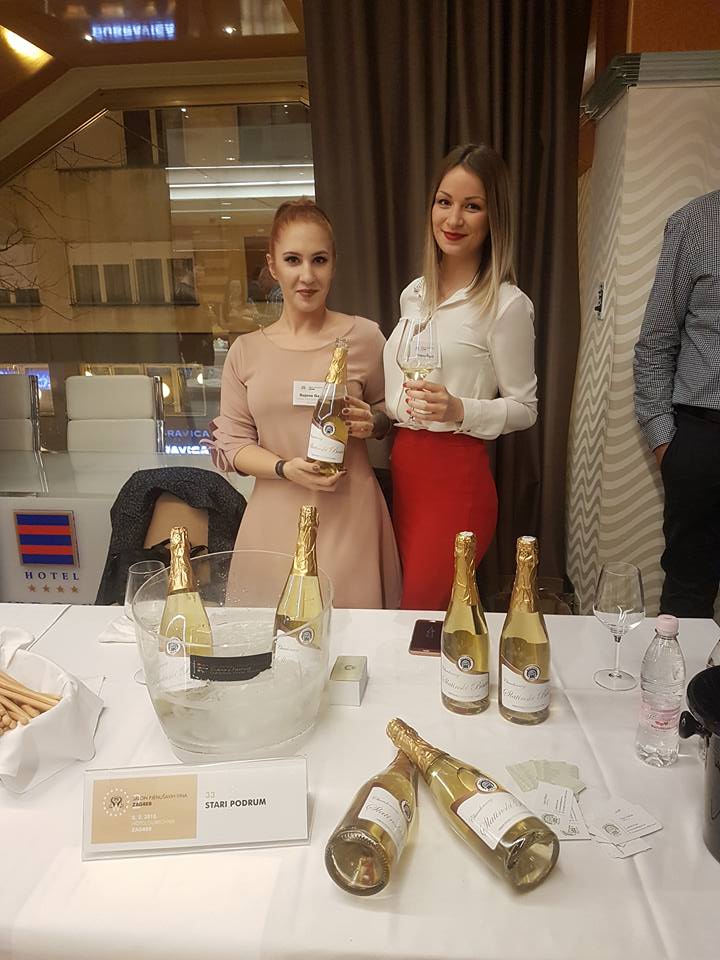 Slatina sparkling wine, revived by Ivan Halas at Stari Podrum, being presented at the 2nd Sparkling Wine Salon at the Hotel Dubrovnik in Zagreb © Tourist Board of Slatina
Slatina sparkling wine, revived by Ivan Halas at Stari Podrum, being presented at the 2nd Sparkling Wine Salon at the Hotel Dubrovnik in Zagreb © Tourist Board of Slatina
“As the Stari Podrum winery does not have adequate conditions for storing the found bottle, we took it to the Homeland Museum in Slatina where it will be stored,” Mr Halas told local news, upon the discovery of the bottle. “Only one bottle was found (so far), although there may be more. It is currently the only fully preserved one in the Slatina area. For now, we assume that it is from the period between 1864 and 1912 - we have no knowledge of the exact year, but the age of the bottle will be determined by experts.”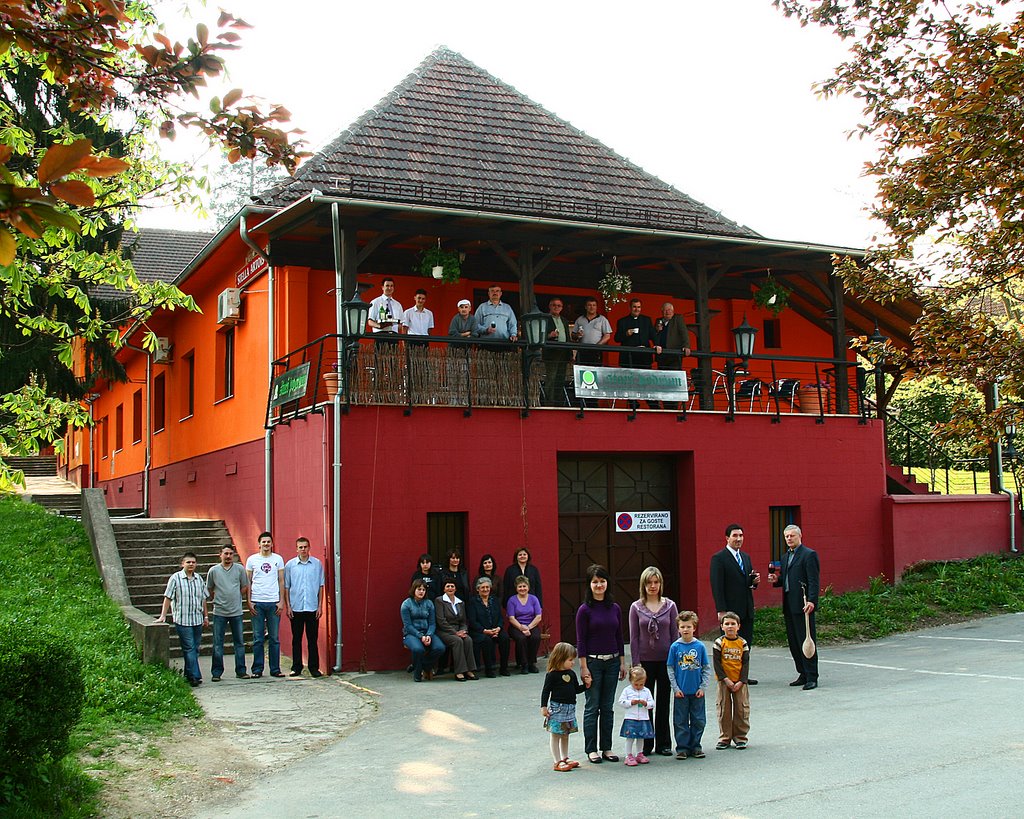 A more contemporary photo of the Stari Podrum enterprise in Slatina © Virovitica State Archives / Slatina Homeland Museum
A more contemporary photo of the Stari Podrum enterprise in Slatina © Virovitica State Archives / Slatina Homeland Museum
EU Funds Turning Old Croatian Castles into Hotels and Museums
EU funds have opened up a wide variety of doors for Croatia, quite literally. As more and more EU funding is accessed, more former Croatian ''glory'' buildings, including old castles and palaces, are having new life breathed into them.
As Poslovni Dnevnik/Marija Crnjak writes on the 28th of May, 2019, in July in Suhopolje near Virovitica, a visitor's centre will be opened up at Janković castle, marking the creation of a brand new attraction for Virovitica-Podravina County, in which a total of 39.7 million kuna will be invested, of which 33.4 million kuna is being funded from European Union fund for Regional Development, permitted under the Preparation and implementation of Integrated Development Programs based on the Reconstruction of Cultural Heritage.
This is just one of the projects which directly involves the revitalisation of a series of castles, noble and ex-military buildings in the aforementioned county, and putting them into the function of tourism within the so-called. Plemićka ruta. At the moment, there are projects in their various phases of implementation or completion of a total value of up to 276 million kuna, as was revealed yesterday at the project's presentation in Zagreb by Josip Mikolčić, assistant director of the VPŽ (Virovitica-Podravina) Tourist Board. Last year, 16,033 tourists visited this continental Croatian county, achieving an impressive 40,276 overnight stays.
"Participating in EU projects is a great opportunity to rebuild many of the neglected facilities that we'll then put into the function of tourism. The county still has a bit of hotel accommodation, which we need to modify so that we can make a significant income from tourism," Mikolčić explained.
Namely, as EU funds can't provide non-refundable money for the construction of hotels, a solution has been found by the Croatian county in question to create presentation centre projects that later be turned into hotels. In addition to the multimedia exhibition hall, 5D cinema and creative lab, Janković will also have fifteen guest rooms, which will initially be registered as rooms for rent, and after five years have passed, another fifteen rooms will be added and the facility will be registered as a heritage hotel, at least that's what the current plan is.
Then, Virovitica-Podravina County will be able to sell that hotel to a private investor, as well as all of its other facilities.
As it is already known, an informative-educational centre and a hostel in a restored summer residence from the nineteenth century have been on the market for about two years now. The Heritage Hotel Kurija Janković is on the Plemićka ruta, and the opening of a museum in the renovated Pejačević Castle is expected this October.
The renovated Ružica grad from the fifteenth century will be receive its first guests within the next 1.5 years, while on the island of Križnica on the border with Hungary, former military facilities will be turned into a camp and a visitor's centre.
Make sure to follow our dedicated lifestyle page for much more.
Click here for the original article by Marija Crnjak for Poslovni Dnevnik
How are Croatian Towns, Cities and Counties Doing with EU Fund Withdrawal?
Just how do various Croatian towns, cities and counties compare in terms of EU fund withdrawal? Some unlikely names have appeared on top...
As Novac/Gradonacelnik.hr writes on the 14th of May, 2019, through the Rural development program, the Republic of Croatia will have over 2.3 billion euro (over 17 billion kuna) from EU funds provided to it to boost competitiveness of agriculture, forestry and processing industries from 2014 to 2020.
The aforementioned EU funds will also be used to improve general living and working conditions, ie, the construction of necessary infrastructure such as kindergartens, fire stations and social housing in rural areas.
As of the end of January this year, at least according to official data, of this more than 17 billion kuna, 10.37 billion kuna was contracted for projects, and a little more than half of that contracted amount was paid out.
Croatian cities, according to that same data (APPRRR), have withdrawn more than 438 million out of a total of 5.66 billion kuna in the past five years. As many as fifteen Croatian towns that are on top of the list in terms of the withdrawal of EU funds from the rural development program are smaller towns, when taking the per capita amount into consideration. That list of Croatian towns which withdrew the most money per capita was led by Nin with 4915 kuna per capita. In total, this ancient town close to the popular destination of Zadar has withdrawn 13.4 million kuna. The town of Nin readily awaited the Rural development programs from 2014 to 2020, Mayor Emil Ćurko stated.
''Investments in project documentation were prepared, public-legal conditions were prepared, investment took place in human resources, all for the purpose of the withdrawal of EU funds. The projects are large, infrastructural, necessary, and we've prepared them so that the maximum amount of European Union funds are used. From each measure, we tried to extract the most funds allowed by the tender condition. We've shaped a project team working on the preparation and implementation of EU projects and we believe that we'll continue to do even better,'' said Ćurko.
Among several other things, Nin received approval for the construction of a kindergarten worth 9.2 million kuna, out of which 6.6 million kuna is being provided by the EU, and 2.6 million kuna is from Nin.
Following Nin are Hrvatska Kostajnica (2745 kuna), Klanjec (2717 kuna), Opuzen (2377 kuna), and Mursko Središće (2276 kuna), followed by Skradin, Grubišno Polje, and Ozalj.
Orahovica has withdrawl 7.4 million kuna until now, and in December, the town was approved once again for almost nine million kuna for the reconstruction and extension of a kindergarten.
''There are still a lot of projects in the plan of the authorities when it comes to other EU funds. They have been prepared in the past year and a little over six months, and the more funds we withdraw from the EU and state funds, the more there is in the budget, which will raise the standard of Orahovica's citizens through various programs,'' said Mayor Ana-Marija Petin.
Mursko Središće, in turn, led the list of total funds received from the Regional development program by the end of January, with 14.3 million kuna of withdrawn funds. This small town in the northernmost part of Croatia received 6.8 million kuna for road construction to help develop the economic zone and 7.4 million kuna for the construction and equipping of kindergartens.
Following in terms of the total amount of funds is Koprivnica, with 13.9 million kuna of withdrawn funds, followed by Slatina with an amount of total withdrawn funds standing at 13.8 million kuna, with Nin coming fourth place with the same amount, and with Karlovac coming fifth on the list, having attracted less than 12 million kuna. Karlovac used those EU funds for the construction of kindergartens, totalling 4.4 million kuna.
On the list of Croatian cities and towns that have withdrawn the most funds, there is another medium-sized town - Bjelovar, which has withdrawn 11.5 million kuna.
In terms of Croatian counties, the Eastern Croatian county of Osijek-Baranja has contracted the most EU funds, or more precisely 1.3 billion kuna for numerous projects. Following are Sisak-Moslavina, Virovitica-Podravina and Pozega-Slavonia, all of which are continental counties.
Make sure to follow our dedicated lifestyle and business pages for much more.


